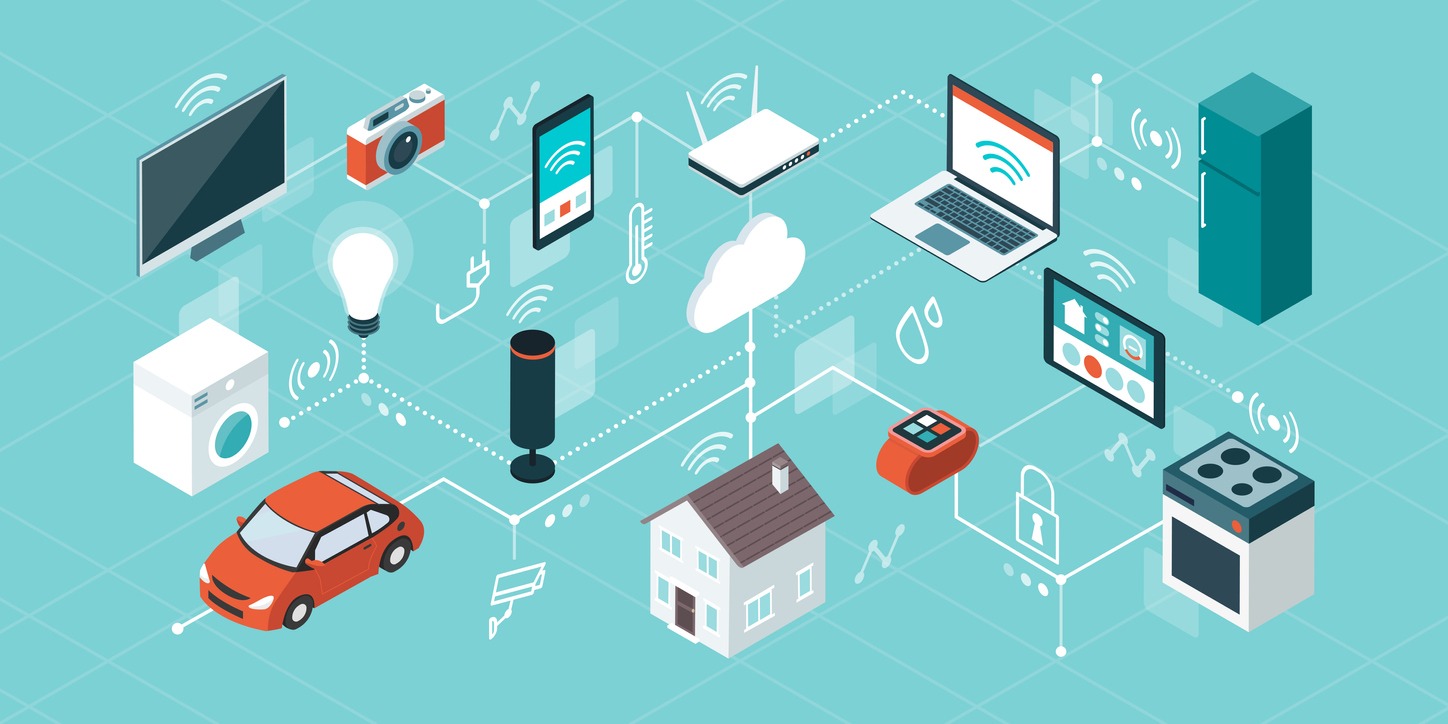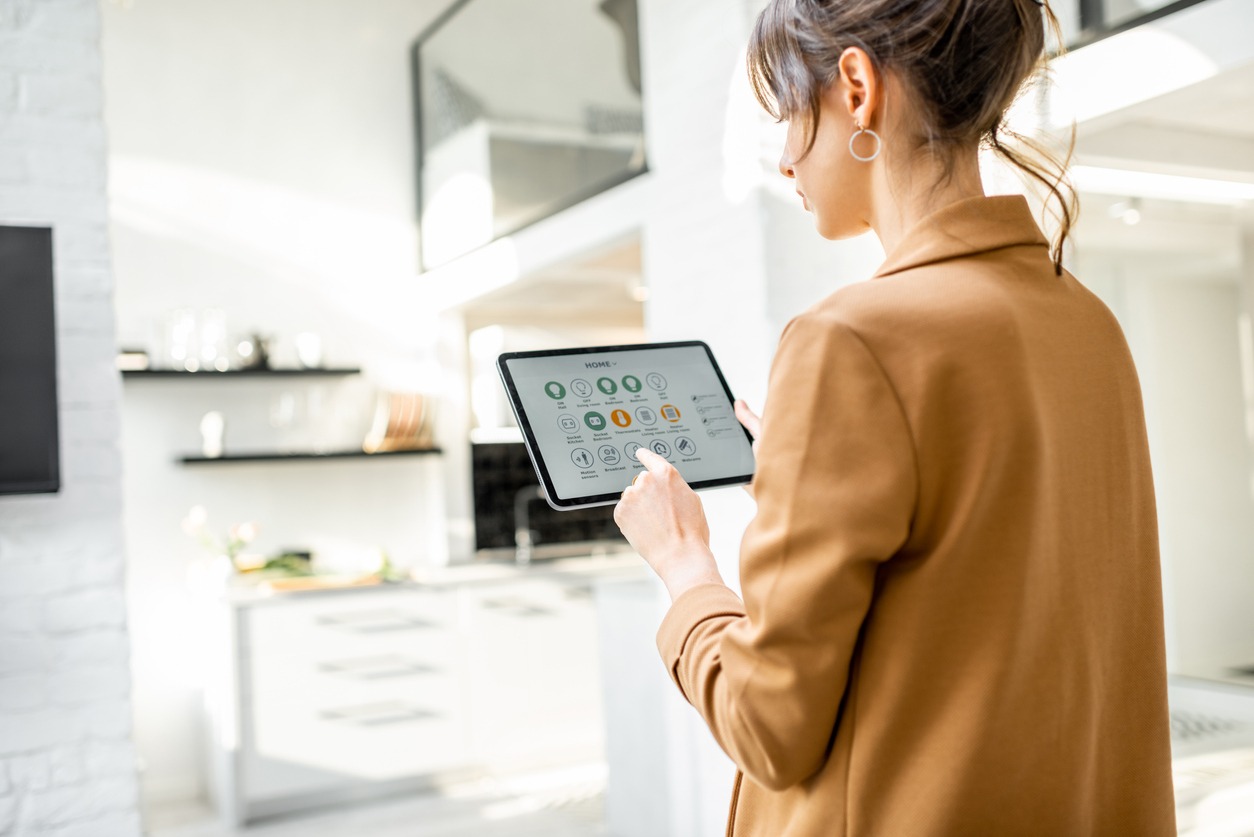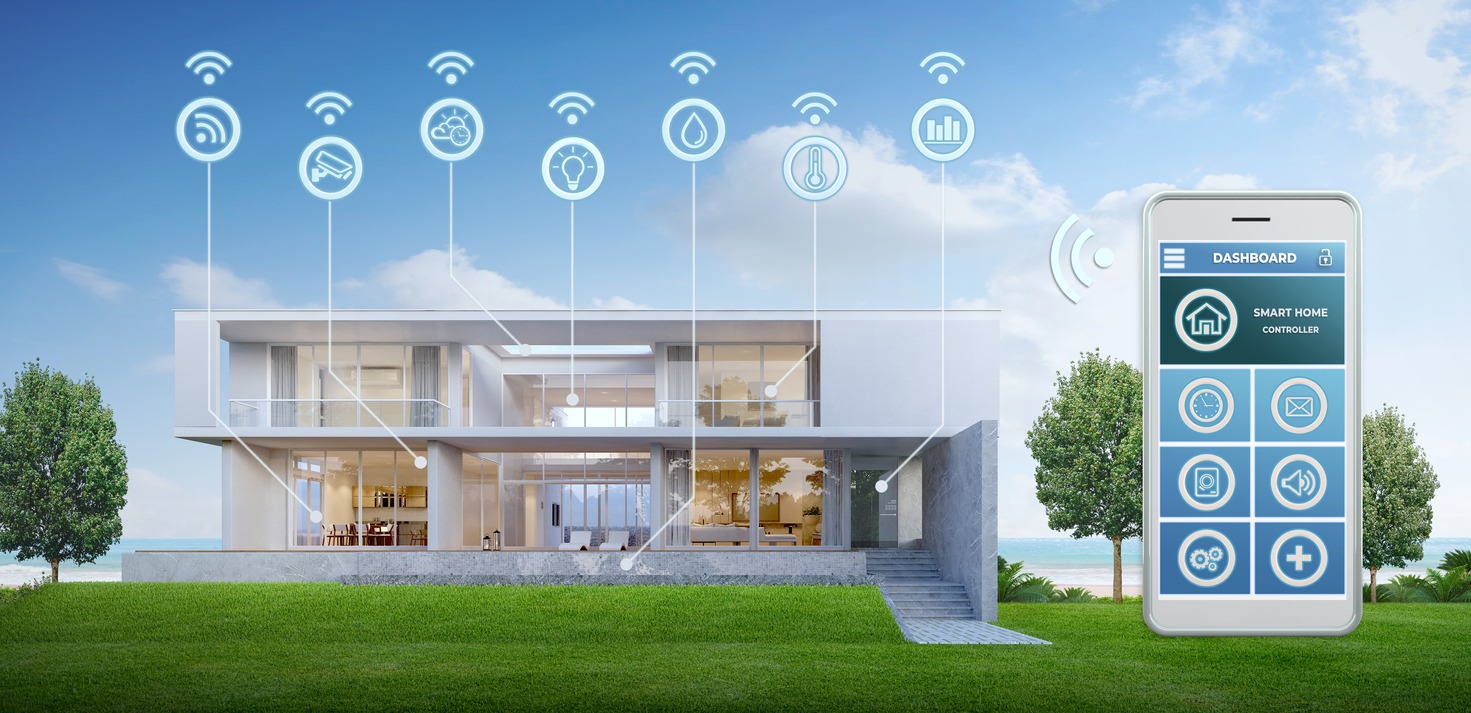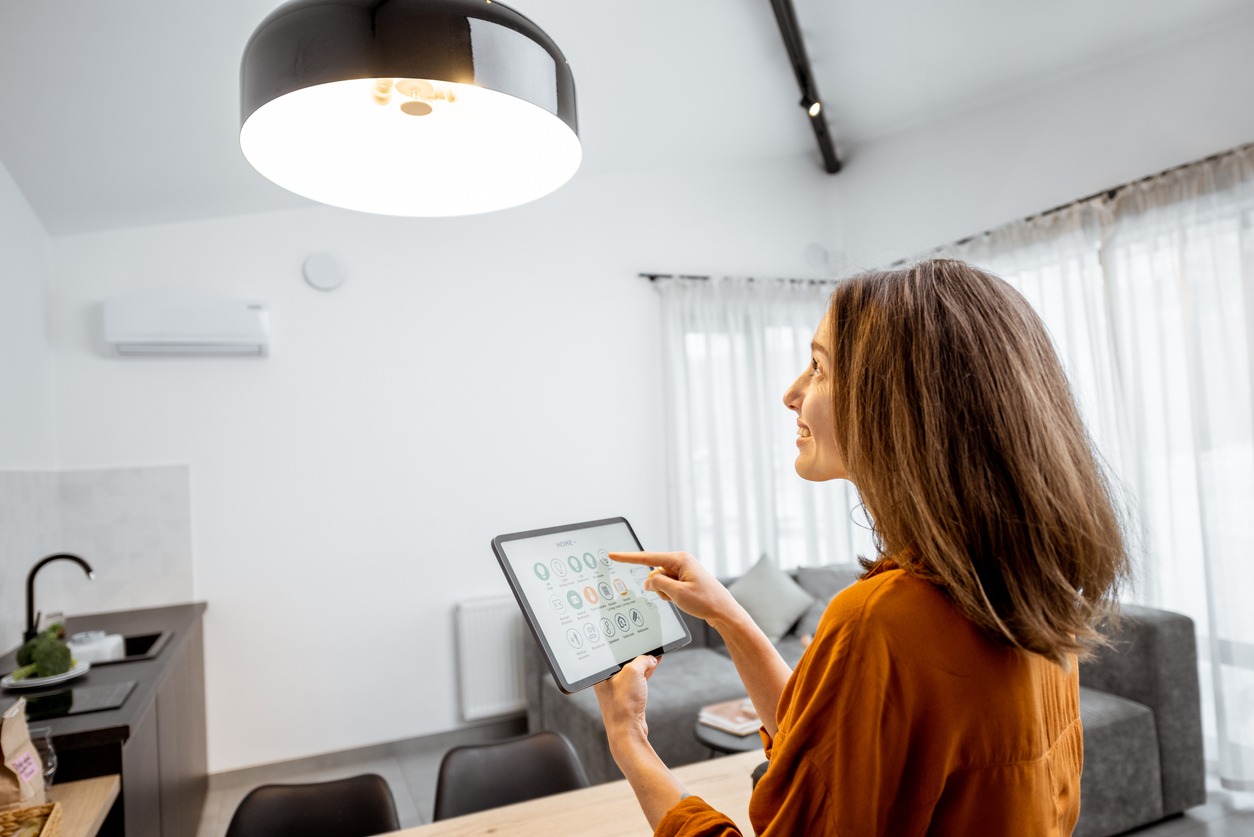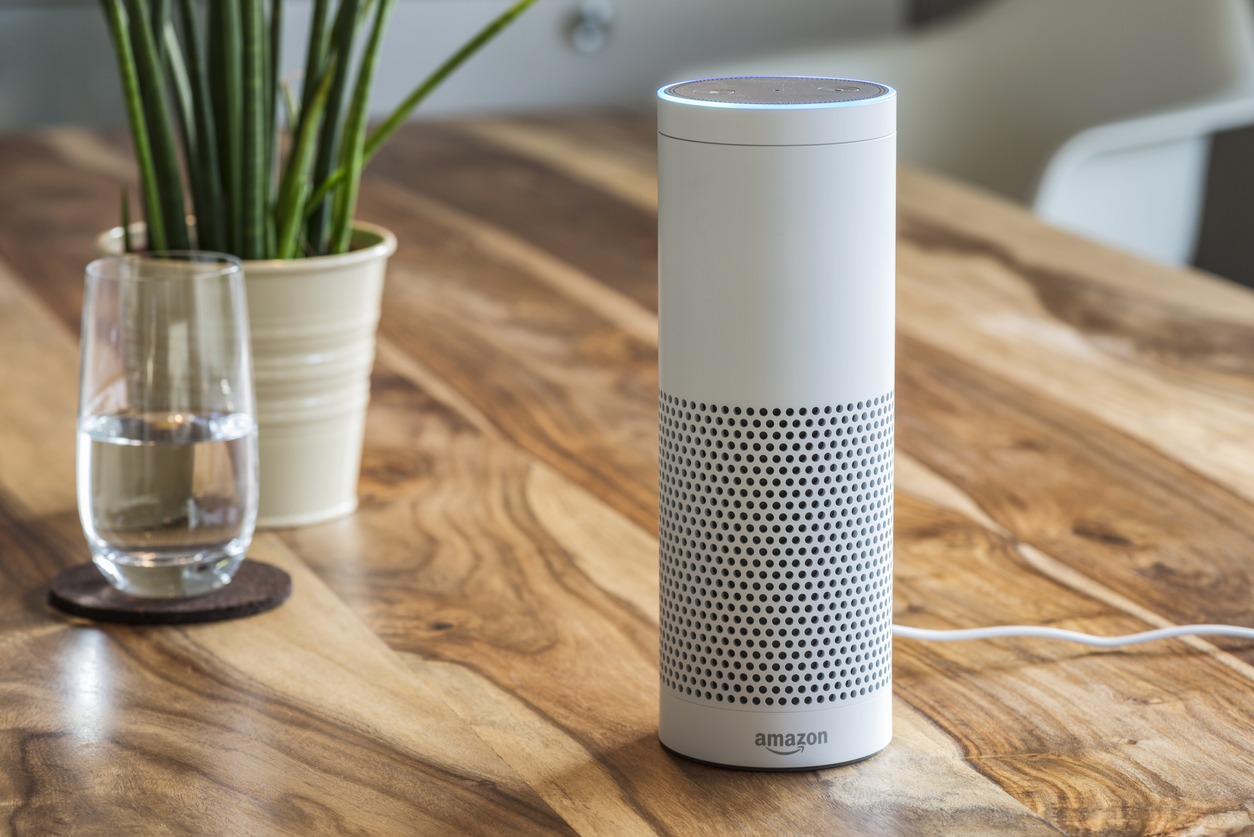Imagine a home that senses your needs, adapts to your preferences, and allows you to turn off the lights without leaving your bed. This futuristic-sounding home is not science fiction; it’s the reality of home automation.
Home automation, powered by the Internet of Things (IoT), is transforming the way we live. It allows you to control your lights, appliances, security, and more from anywhere with a simple tap on your smartphone or a voice command to your smart speaker. In this article, we’ll explore what home automation is, how it works, and the benefits of bringing this technology into your daily life.
What Is Home Automation and How Does It Work?
Home automation, often called a smart home, allows you to control devices like lights, fans, and TVs. It can also manage aspects like lighting, climate, entertainment systems, and appliances. It even extends to home security, including access control and alarm systems. When these devices are connected to the Internet, they become part of the Internet of Things (IoT).
A typical home automation system connects your controlled devices to a central hub or gateway. You can manage this system through wall-mounted terminals, tablets, computers, smartphone apps, or online interfaces accessible from anywhere with an internet connection.
Smart home automation uses technology to automate functions like lighting, heating, air conditioning, and security. With IoT and M2M (Machine-to-Machine) communication, you can control and monitor these systems remotely through a network connection.
One major advantage of IoT-enabled home automation is the ability to control and monitor various devices and systems from one central location, like a smartphone or tablet. This includes lighting, temperature control, security cameras, and alarm systems.
Another benefit is the ability to monitor and control devices remotely, even when you’re away from home. This is handy for managing energy consumption and ensuring home safety and security.
IoT-enabled home automation typically involves smart devices like thermostats, light bulbs, and security cameras. These devices communicate with each other and a central hub using wireless protocols like Zigbee, Z-Wave, and Bluetooth.
Additionally, IoT-enabled home automation can integrate with other smart home technologies, such as voice assistants like Alexa and Google Home, to provide added functionality and convenience.
Internet of Things vs. Home Automation
IoT stands for the Internet of Things, which basically means any device connected to the Internet that wouldn’t normally be. Like those fancy smart light bulbs you can control with your phone or smart speakers you can talk to. All those home automation gadgets and devices fall into the IoT category. Home automation is what you do with these IoT gadgets to make life more convenient at home.
What’s an IoT-Based Home Automation System?
An IoT-based home automation system is a centralized system that manages all the other devices in your home. Think lights, appliances, heating and cooling systems, sprinklers, alarms, and even security devices like CCTVs. It connects all these things together over wireless networks. You can practically automate your entire house!
This might sound a bit complicated for most people. That’s why one of the most popular uses of home automation systems is for smart home security. These systems have nifty features like automated alarm systems and smart locks, making your home more secure.
The great part is that IoT-based home automation isn’t just convenient, it’s also eco-friendly. You can save money on your electricity bills thanks to gadgets like smart thermostats. They’ll keep your home cozy when you’re there, but turn off the AC or heat when you’re out. No more wasting cash on cooling or heating an empty house. So, IoT-based home automation not only makes your life easier, but it’s also kind to the environment and your wallet (in the long run).
How Does Home Automation Work?
Home automation operates through a network of devices connected to the Internet using various communication protocols such as Wi-Fi, Bluetooth, ZigBee, and more. These devices are equipped with electronic interfaces, allowing remote management via controllers, such as voice assistants like Alexa or Google Assistant, or mobile apps. Many of these IoT devices come with sensors to monitor changes in motion, temperature, and light, providing users with information about their surroundings. To make physical changes to the devices, users can trigger actuators, which are physical mechanisms like smart light switches, motorized valves, or motors that enable remote control.
Home automation functions on three key levels:
1. Monitoring: Users can remotely check their devices through an app. For instance, you can view a live feed from a smart security camera on your smartphone.
2. Control: Control means users can operate these devices remotely. For example, you can adjust the position of a security camera to see different areas of a room from your app.
3. Automation: Automation involves setting up devices to trigger one another. For instance, you can configure a smart siren to go off when an armed security camera detects motion.
Components of a Home Automation System
Some home automation systems require hubs, while others can connect directly to a router, which communicates directly with an IoT device. A hub can add an extra cost on top of the IoT device itself, so it’s more convenient when no hub is necessary.
1. Remote Control
Mobile Application: The mobile app lets users control their devices in real-time, from turning off outdoor lights to opening a smart garage door for a neighbor. Users can also set schedules, create scenes, group IoT devices, and customize device settings through the app, such as adjusting the color of their living room lights. Most IoT devices have apps for both Android and iOS, making them compatible with the majority of smartphones and tablets.
Voice Assistants: Voice assistants are the cherry on top of the home automation sundae. They allow users to control devices using their voice, like disarming a security system when entering the front door, displaying video doorbell footage on an Echo Show device, or setting a timer on a smart speaker while your hands are busy in the kitchen. Most IoT devices are compatible with one of three main voice assistants: Alexa, Google Assistant, and Siri.
Alexa: Amazon’s voice assistant is integrated into Echo Show and Echo Dot devices, and it’s commonly found in various smart home devices from companies like SimpliSafe, Ring Alarm, and Cove.
Google Assistant: Google’s voice assistant is known for its high accuracy in understanding and answering queries. You can get started with Google Assistant using a smart speaker or smart display.
Siri: Apple’s voice assistant, primarily integrated into iPhones and iPads, is less commonly used in home automation devices compared to Alexa and Google Assistant.
2. Control Protocols
Think of control protocols for IoT devices as their languages. Just like people have different languages, IoT devices use different protocols to communicate. Here are some common ones:
Wi-Fi: Wi-Fi is the most common control protocol, using your regular internet connection from your Internet Service Provider. While it doesn’t require an extra hub, having many IoT devices on Wi-Fi can slow down your web browsing speed.
Z-Wave: If you don’t want to mess with your home’s Wi-Fi, Z-Wave is a wireless technology that won’t interfere with your Wi-Fi. It operates on low power frequencies, mainly at 908.42 MHz, in the U.S. and Canada.
ZigBee: Similar to Z-Wave, ZigBee is a universal language that allows IoT devices to communicate in a mesh network.
Thread: Thread is another low-power, wireless mesh networking protocol based on an IP address open standard. It lets IoT devices connect to each other and the cloud.
Bluetooth: Bluetooth is another mesh technology that enables people to control and monitor IoT devices and set up automation systems.
For most people, Wi-Fi-connected devices will work just fine. But for those with more advanced smart homes, switching to a mesh network like Z-Wave or ZigBee might be a good move.
3. Smart Devices
The IoT-based home automation kit includes different smart devices for lighting, security, home entertainment, and more. These devices all link up through a network set up by the gateway in a mesh network. What this means is that they can work together in sequence. For instance, you can schedule the living room lights to turn on as soon as the door or window sensor on your main door activates after 7 p.m.
All the sensors within this common network can communicate via the main controller unit. Some smart sensors act as sensor hubs, sort of like signal repeaters or bouncers positioned midway between the main hub and sensors that are a bit farther away. For those longer distances, these sensor hubs play a vital role in helping signals reach sensors that are farther from the main controller but closer to the sensor hub. A popular type of sensor hub in IoT-based home automation systems is Smart Plugs.
Advantages and Drawbacks of Home Automation
Home automation, like most things in life, comes with its set of benefits and downsides. Overall, we believe it’s a valuable addition, but it might not suit everyone, depending on individual preferences.
Pros:
Remote Access: The ability to control devices from afar, like unlocking the door for a plant sitter without hiding a spare key under the mat.
Comfort: Ever found yourself snug in bed, only to realize you left the bathroom light on? With smart light bulbs, you can switch them off without leaving the comfort of your sheets.
Energy Efficiency: How often have you left the heat cranked up while you were out all day? Home automation allows you to set things like thermostats on schedule, preventing energy wastage. For example, Nest thermostats can save about 12 percent on heating and cooling costs over time.
Convenience: Remote control, voice commands, scheduling, and even syncing with sunrise and sunset make life more convenient. Imagine waking up to freshly toasted bread and freshly brewed coffee without lifting a finger!
Safety: Many smart security products enhance home safety, including door and window sensors, people-detecting security cameras, and video doorbells that let you greet visitors from anywhere with an internet connection.
Cons:
Costs: IoT devices tend to be pricier than their non-Wi-Fi-connected counterparts. For instance, an average smart bulb costs around $32, while a regular one is about $5. However, the added features like remote control, dimming, various colors, and voice integration contribute to the cost. Home automation isn’t budget-friendly, depending on where you shop.
Security Concerns: Anything connected to the Internet can be vulnerable to hacking, including IoT devices. We’ve seen incidents of hacking and security breaches from major tech companies producing IoT devices. For instance, Ring’s cameras were infamously hacked, compromising live feeds. This isn’t a concern with non-connected devices, but if you opt for IoT gadgets, you must follow the best digital security practices.
New Technology: IoT is relatively new, so you might encounter issues like devices struggling to connect to the Internet or experiencing lag, depending on the device’s make and model.
Surveillance: If privacy is a top priority, smart security might not be your cup of tea, as users can livestream camera footage through the respective app. You might prefer a local alarm system instead.
How to Get Started with Home Automation
Setting up a home automation system isn’t as complicated as it might seem. You can dive right in and buy a smart home product that catches your eye, or you can go about it more strategically with these simple steps:
1. Smart Home Ecosystem
First, pick the “smart home ecosystem” you want to be a part of, usually Amazon or Google. This choice determines your voice assistant and which IoT devices are compatible with your system. While some products work with both Alexa and Google Assistant, sticking to one makes things less confusing. Start by buying a compatible smart speaker or smart display to begin your home automation journey.
2. Control Protocol
Next, decide on the protocol you want your devices to use for communication, whether it’s Wi-Fi, Z-Wave, ZigBee, or others. If you’re new to smart homes, Wi-Fi is the simplest option since most IoT devices work with it.
3. Types of Products
Go through each room and figure out what types of products you need, such as security cameras, light bulbs, locks, coffee makers, and more.
4. Brands
Research the best smart home companies. Reviews can help you choose popular brands like Ring, Nest, SimpliSafe, Alder Security, and others.
5. Devices
Now, it’s time to purchase your IoT devices. Buying in bulk can often get you discounts. Keep an eye out for seasonal sales from companies like SimpliSafe, which frequently offer promotions.
6. Installation
Install your IoT devices where you want them. Most have DIY installation, meaning you can do it yourself for free. However, some companies like Vivint and ADT require professional installation for their smart security systems, so factor in any installation costs.
7. Customize Settings
With your devices researched, purchased, and installed, you can start customizing them. This includes setting schedules, dimming lights, and making devices trigger one another.
Most Popular IoT Home Automation Devices
Each year, more IoT devices become available, covering everything from smart medical alert systems to smart microwaves. Some of the most popular IoT devices include:
Lights: Smart bulbs are affordable and let you adjust lighting easily, with features like color changes, dimming, schedules, and music syncing.
Thermostats: Smart thermostats allow remote temperature adjustments and scheduling, helping you save on heating and cooling costs.
Locks: Smart locks enhance security by automatically locking when you leave or letting you grant access through an app.
Video Doorbells: These act as outdoor cameras, notifying you of doorbell presses, motion, or people at your door.
Security Cameras: These let you monitor your home from a mobile app, with motion and people alerts.
Security Systems: Smart security systems include motion, entry, and glass break sensors for detecting various threats.
TVs and Remotes: Smart TVs like Apple TV, Fire TV, and Chromecast offer voice commands for your entertainment.
Speakers: Smart speakers are the foundation of a smart home, enabling voice commands via voice assistants.
Displays: Smart displays are like smart speakers with screens and often cameras, offering more entertainment and video chat options.
Medical Care: Wi-Fi-connected medical alert systems provide monitoring for seniors and can even detect falls.
Other IoT Products: The range of IoT devices includes Alexa-enabled microwaves, smart plugs, scales, smoke detectors, and CO detectors, expanding into various categories. You can even control your smoke alarm from your phone for added convenience.
Tips for Securing IoT Devices
While digital security is increasingly important, it might not be built into all IoT devices. Here are some steps to secure your home automation system:
1. Secure Router: Use a secure router from a different company than your Internet Service Provider. Look into routers from reputable brands like NETGEAR, Linksys, and TP-Link.
2. Privacy Policy: Read the privacy policy of the company to understand how they handle customer data, including sharing and selling it to third parties.
3. Name Your Router: Give your router a unique name rather than sticking with the default one.
4. Encryption: Choose strong encryption for your Wi-Fi network, such as WPA2.
5. Wi-Fi Password: Set a strong, complex, and unique password for your Wi-Fi network to prevent unauthorized access.
6. Separate Wi-Fi Network: Consider a separate Wi-Fi network exclusively for IoT devices to enhance security and overall Internet speed.
7. Password Hygiene: Ensure that IoT device accounts have distinct, strong passwords that aren’t reused on other accounts. No old and repeated passwords are allowed!
8. Device Settings: Turn off unnecessary features when not in use, such as Wi-Fi, Bluetooth, and location services, to reduce the risk of hacking.
9. Software Updates: Regularly update device software, as updates often include security enhancements.
10. Authentication:Use two-factor authentication (2FA) for additional security. Some accounts offer fingerprint or facial ID as multi-factor authentication.
11. VPN (Virtual Private Network):When using an IoT device on public Wi-Fi, connect to a VPN to encrypt web traffic and hide your IP address.
While no security measures can guarantee 100% protection, these steps can significantly reduce the risk of hacking.
Conclusion
Creating a smart home is a gradual process. You can begin with a few devices and expand your home automation system over time. The constant influx of new IoT devices means you have endless possibilities to enhance safety and convenience in your daily life. It’s all about taking it one step at a time.
